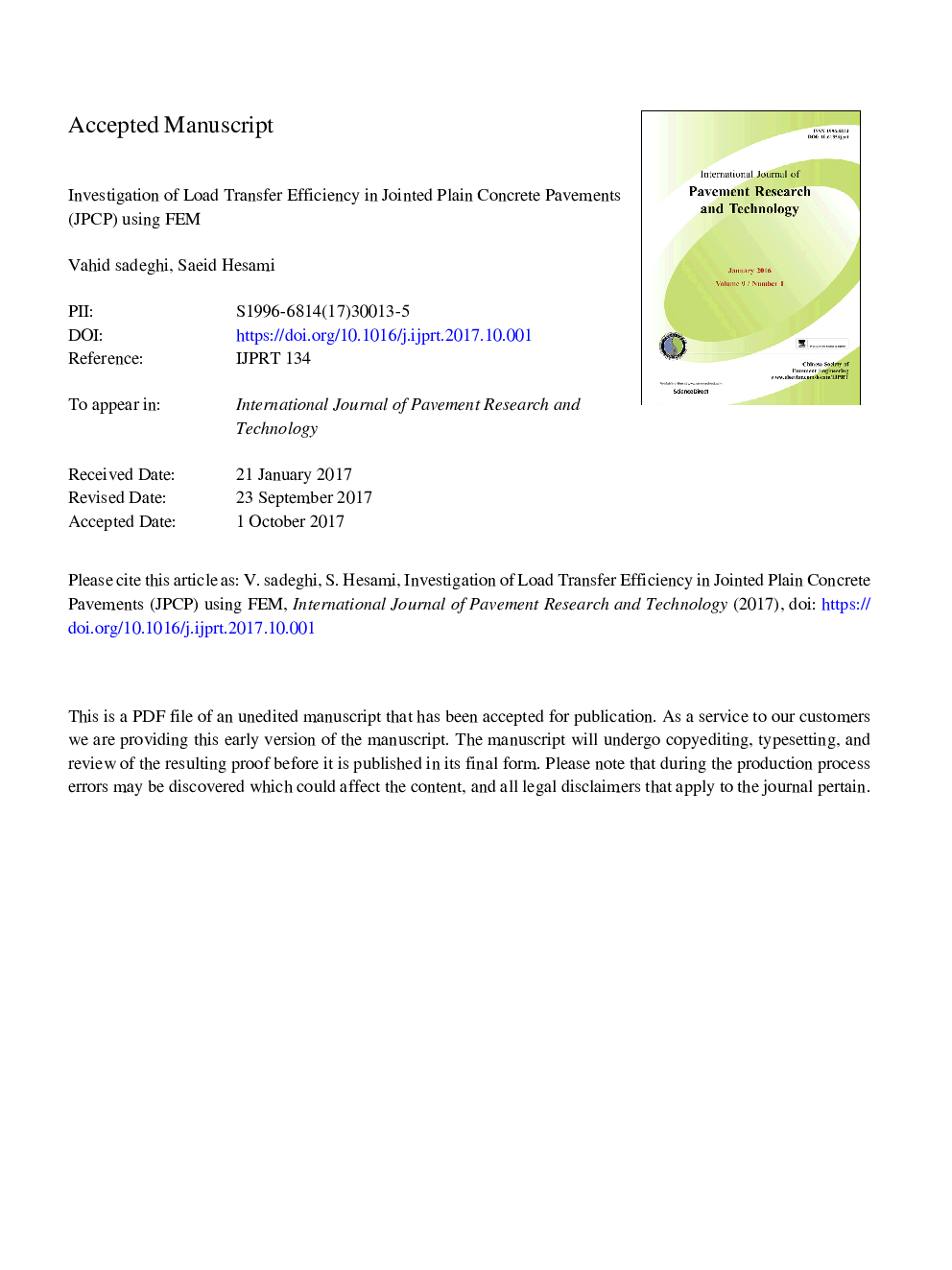| Article ID | Journal | Published Year | Pages | File Type |
|---|---|---|---|---|
| 6747898 | International Journal of Pavement Research and Technology | 2018 | 36 Pages |
Abstract
Owing to heavy traffic loads, rigid pavements encounter various types of failures at transverse joints during their lifetime. Three-dimensional finite-element method (3D-FEM) was used to assess the structural response of jointed concrete pavement under moving tandem axle loads. In this study, 3D FEM was verified using an existing numerical model and field measurement of the concrete slab traversed by a moving truck. This paper also investigated the effects of multiple parameters: material properties, slab geometry, load magnitude and frictional status of the slab and base layer on load transfer efficiency (LTE) of the transverse joints. Further study has been done to investigate the slab performance without the dowel bars which occurs when parts of the pavement needed to be repaired using precast slabs. The aggregate interlock between the new slab and the existing slab is simulated by frictional interface. In 3D FEM model, the load transfer efficiency has been improved by increasing the elasticity modules of the concrete slab and the base layer or increasing the slab thickness. This can decrease the joints' deflections, reduces the damages on pavement joints. Removing dowel bars adversely affected the load transfer.
Related Topics
Physical Sciences and Engineering
Engineering
Civil and Structural Engineering
Authors
Vahid Sadeghi, Saeid Hesami,
